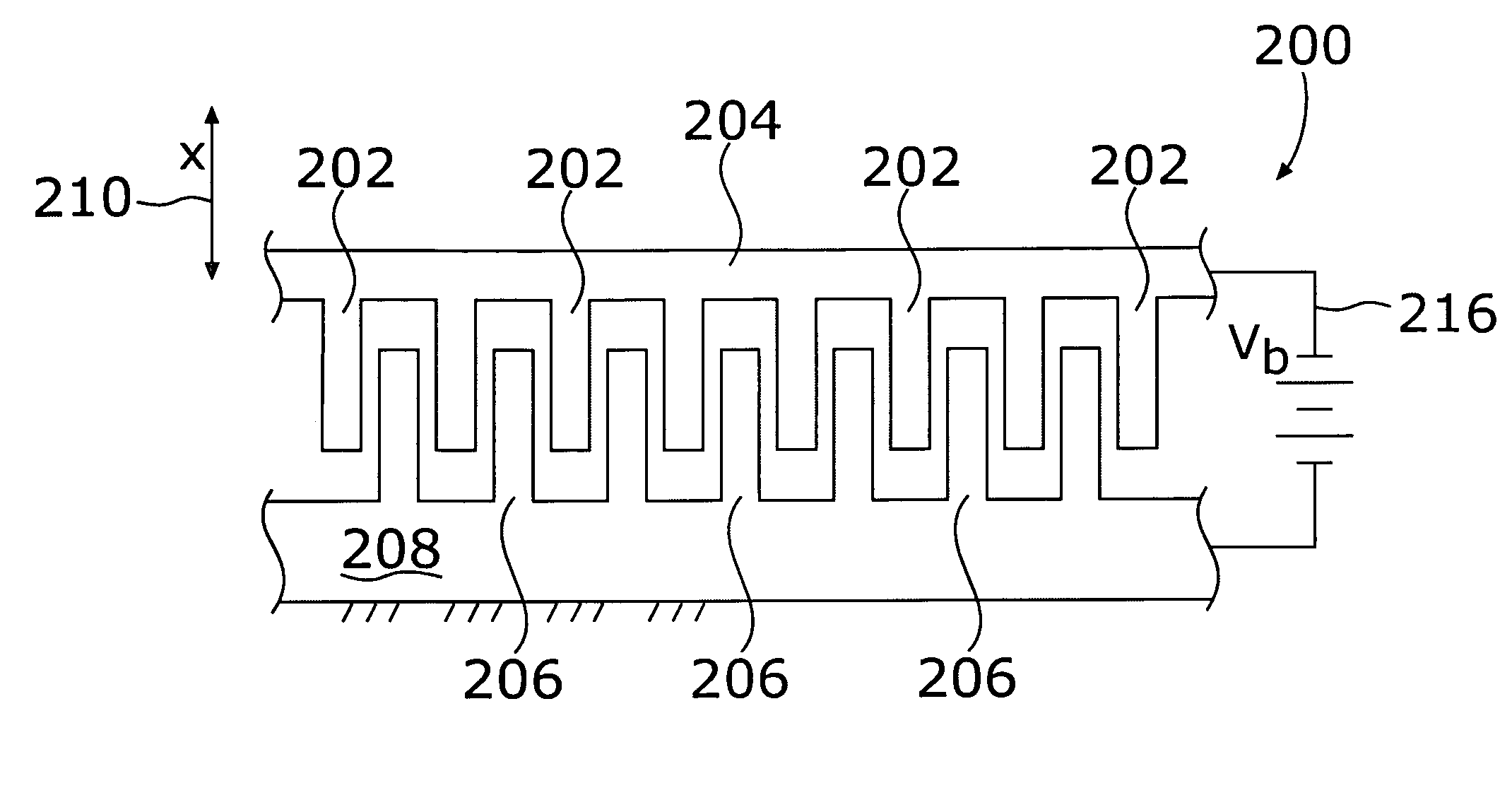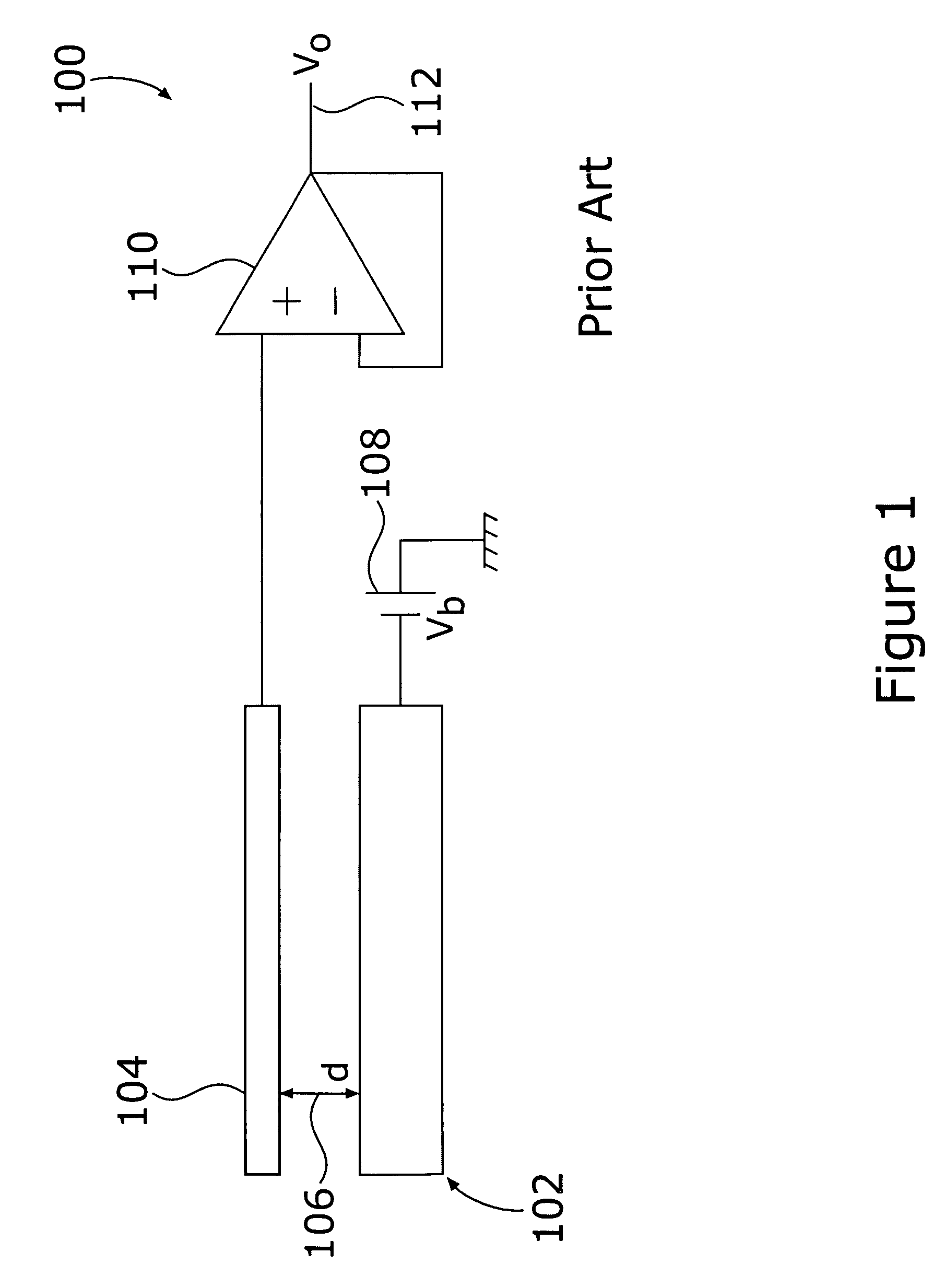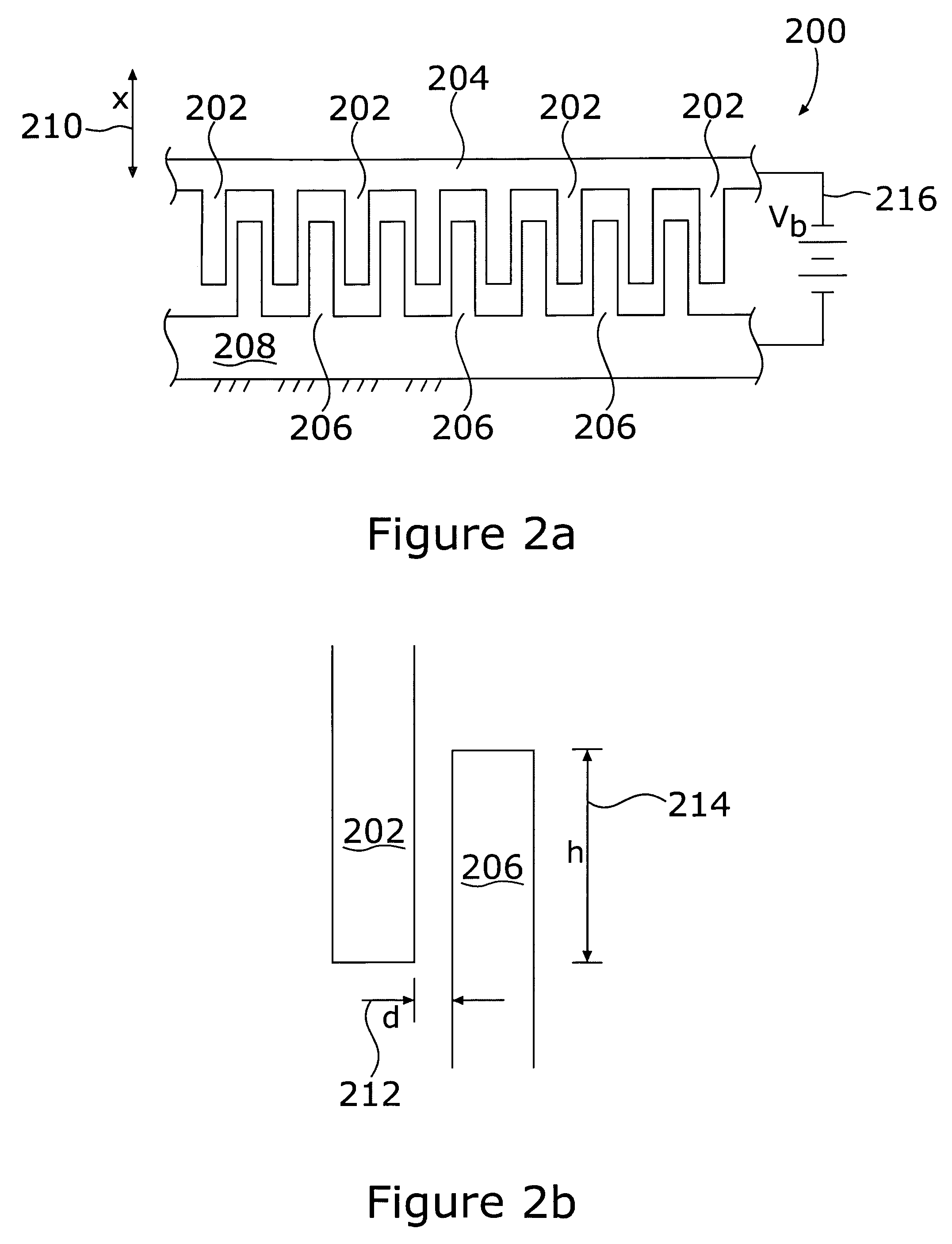Comb sense microphone
a comb sense and microphone technology, applied in the direction of electrical transducers, piezoelectric/electrostrictive transducers, transducer types, etc., can solve the problem of limiting the practical upper limit of bias voltage vb, diaphragm stiffness conflicts, and distortion of output signals relative to the sensed acoustic pressure typically, etc. problem, to achieve the effect of low noise, high output voltage and easy formation
- Summary
- Abstract
- Description
- Claims
- Application Information
AI Technical Summary
Benefits of technology
Problems solved by technology
Method used
Image
Examples
Embodiment Construction
[0033]A highly efficient capacitance microphone that overcomes the deficiencies of classic capacitance microphones of the prior art described hereinabove may be formed by making a diaphragm having a series of fingers disposed around its perimeter. These fingers are then interdigitated with corresponding fingers on a fixed structure analogous to a back plate in microphone 100 (FIG. 1).
[0034]Referring now to FIG. 2a, there is shown a schematic cross-sectional view of an interdigitated finger structure, generally at reference number 200. A series of fingers 202 projects from the surface of a substrate 204. The surface of substrate 204 is free to move out of the plane of the figure and forms the diaphragm of a microphone. Additional fingers 206 project from the surface of a fixed structure 208 representative of a microphone back plate. Fingers 202 projecting from diaphragm 204 are free to move with the diaphragm out of the plane of the figure as well as in the direction x indicated by a...
PUM
 Login to View More
Login to View More Abstract
Description
Claims
Application Information
 Login to View More
Login to View More - R&D
- Intellectual Property
- Life Sciences
- Materials
- Tech Scout
- Unparalleled Data Quality
- Higher Quality Content
- 60% Fewer Hallucinations
Browse by: Latest US Patents, China's latest patents, Technical Efficacy Thesaurus, Application Domain, Technology Topic, Popular Technical Reports.
© 2025 PatSnap. All rights reserved.Legal|Privacy policy|Modern Slavery Act Transparency Statement|Sitemap|About US| Contact US: help@patsnap.com



